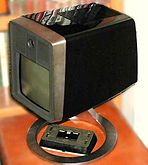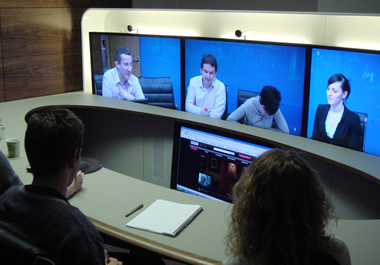On June 29, 2018 we applied to TechCrunch Disrupt, San Francisco 2018. Their Q&A will serve nicely as as some initial FAQs:
Telex will redefine how we communicate at a distance, bridging the old with the new-- the high reliability of the traditional phone system with real-time visual, interactive elements of the Internet. Consumers simply phone into a shared-screen experience, similar to a webinar.
We are seeking key technology partners to exploit patent grants in 16 key countries, over 4 continents, including U.S. China, Australia, and most of western Europe. Funding may be sought in 2019.
WHY IS YOUR TEAM UNIQUELY SUITED TO BUILD THIS COMPANY?
Telex is triggered by a toll-free call. We have 20+ years of experience in toll-free and Internet branding and strategy. In addition, we've served on the Somos User Group for 3 years and currently serving on the Public Policy committee. Somos is the national registry for toll-free numbers.
IN ONE SENTENCE-WHAT ARE YOU BUILDING?
Telex blends the phone with the Internet— human interaction with visual display—into a unified, retail experience.
WHAT PROBLEM ARE YOU SOLVING?
Retail commerce is either blind by phone or visual by Internet, but never both. We bring together the best of both worlds. In addition, phone calls are privacy-protected by law.
WHAT IS THE PRIMARY USE CASE YOU’RE SOLVING FOR?
We provide a virtual in-store, retail experience, but Telex can be applied to any business communication that can be enhanced with the visual display goods and services.
WHAT IS YOUR SOLUTION?
Telex is a patented innovation that allows callers to view visual content simply by dialing a toll-free number; you call, you see! Consumers call into a shared-screen experience, similar to a webinar. They need only a phone and browser. Check out the True View app here. Just dial as you view!
The killer app is visual content, NOT video conferencing. Unlike Skype, FaceTime, and other services, Telex works off the public switch telephone network, which is ubiquitous.
WHO WANTS YOUR PRODUCT OR SERVICE?
Call centers and Retailers, especially those hard-hit by Amazon. Telex will empower them to compete with a superior retail experience.
IF LAUNCHED, WHAT IS CURRENT CUSTOMER FEEDBACK AND TESTIMONIAL ON THE PRODUCT? WHAT IS THE NPS?
Launching soon.
HOW DO YOU DISTRIBUTE YOUR PRODUCT/HOW DO USERS FIND OUT ABOUT YOU?
Initially direct to retail. We will hold in-person sessions in shopping districts like Union Square, Madison Ave, Magnificent Mile, Rodeo Drive, and others. Once proven, we'll hand-off sales to telecom resellers like AT&T, Verizon, and others for global distribution.
HOW DO YOU/WILL YOU MAKE MONEY?
Telex is an enhancement to traditional toll-free services, familiar to all. We're going to charge by the minute for visual, recorded sessions. Both consumers and retailers can access for later review. We'll own the core platform and make Telex available through participating telecommunication carriers.
WHO ARE YOUR BIGGEST COMPETITORS?
Verizon has competing patent, but has yet to launch visual telephony. They would wise not to pursue this, however, simply because no other carrier will align with them. Further, our solution is superior in that it works on all phones, even pots lines (old analog phones).
We see our primary competitor as Amazon. Like Amazon, Telex will hold user data and only share that with retailers on an as-needed basis, i.e. when orders are placed. Consumers will have one log-in across all participating retailers, world-wide.
WHY WILL YOU WIN AMONGST YOUR COMPETITION? WHAT MAKES YOU UNIQUE?
Telex provides a virtual in-store experience, superior to either the phone or the Internet alone.
HOW BIG IS YOUR INITIAL TARGET MARKET? YOUR TOTAL TARGET MARKET?
We don't have data on this, but toll-free services exist through-out the world. In the US, typical wholesale rates are a penny a minute. We're going to charge nine cents/minute for session time. In addition, there's even a country code "800," set aside for global freephone calling.
Why does toll-free matter anymore? Callers cannot block Caller ID when retailers pay for the calls. This is an essential feature, allowing us to match inbound callers with their log-in identity.
PLEASE SUMMARIZE YOUR TRACTION
We have a basic demo as you'll see in the video. By Disrupt 2018, we'll have a working beta version.
IS YOUR PRODUCT PROPRIETARY?
Yes.
IF YES, DO YOU HOLD A PATENT FOR YOUR IP
We are seeking key technology partners to exploit patent grants is 16 key countries over 4 continents, including U.S. China, Australia, and most of western Europe.
IF YES, PLEASE DESCRIBE HOW AND PROVIDE LINKS TO ANY APPLICABLE PATENTS
US Patent grant follows. Through European validations, the Telex patent was translated into German, French, Italian, and Spanish. We can provide links upon request.
DO YOU PLAN TO RAISE CAPITAL? IF SO, WHAT ARE THE MILESTONES YOU ARE PLANNING TO ACHIEVE?
Funding anticipated in 2019. This year, we are seeking key technology partners to contribute their software and expertise. Perfect, then scale.
WILL YOU BE LAUNCHING SOMETHING ON STAGE AT THE STARTUP BATTLEFIELD?
If invited, we would participate in the competition. We signed up on June 28m, 2018, just beyond the formal deadline for the Battlefield.
WHAT WILL YOU BE LAUNCHING AT THE STARTUP BATTLEFIELD
Our beta version. What you'll see linked is our initial demo, not the beta version. When you pen the link, dial any of the numbers shown. Or, call me and we'll do it together, sharing the same screen. Reload after each call and note that 1-800-Go-Airport is 800-462-4776 (not "463")





